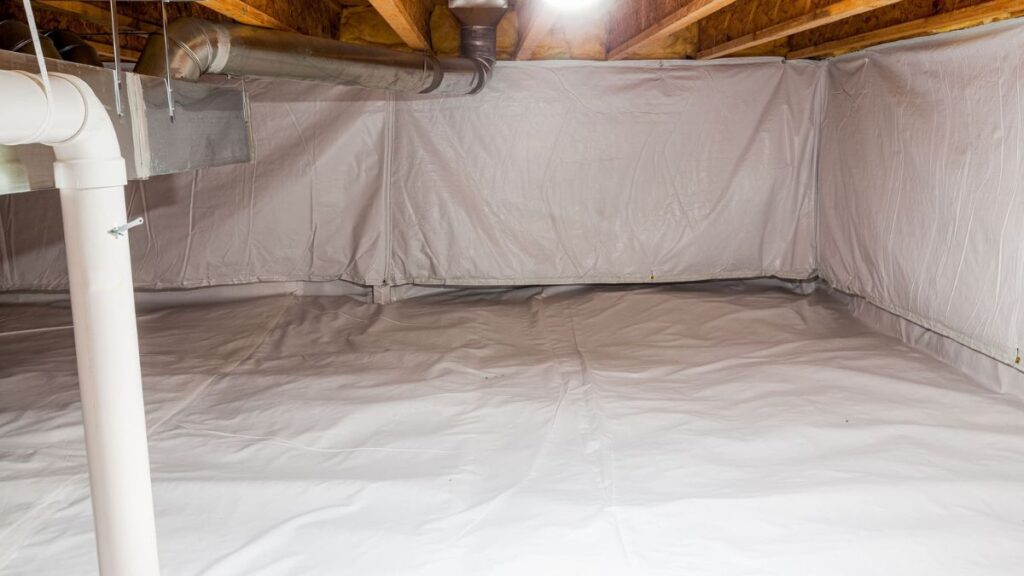Introduction
Many homeowners pay close attention to roofing, windows, and siding, but far fewer give the same consideration to what’s underneath their homes. If your property has a crawlspace, its condition may be quietly influencing your home’s air quality, structural integrity, and energy efficiency every single day.
Unsealed or poorly maintained crawlspaces can become breeding grounds for mold, mildew, pests, and excess moisture—all of which lead to serious long-term damage. That’s why crawlspace encapsulations are gaining attention as one of the most important yet underutilized home improvements available today.
In this article, we’ll explore what crawlspace encapsulation is, how it works, why it matters, and what homeowners need to know before investing in this protective upgrade.
What Is Crawlspace Encapsulation?
Crawlspace encapsulation is a process that involves sealing off the entire crawlspace—floors, walls, and vents—to create a controlled, dry environment. This is typically achieved by installing a heavy-duty vapor barrier (usually made of polyethylene), sealing air leaks, and often including insulation and dehumidifiers.
The goal is to prevent moisture, pests, mold, and cold air from entering the crawlspace and, by extension, the living areas above. It turns what was once an unregulated and sometimes hazardous area into a clean, conditioned space.
Unlike basic moisture barriers, crawlspace encapsulations are comprehensive and long-lasting. They don’t just cover the ground—they protect the entire crawlspace environment.
Why Crawlspaces Are Vulnerable
Crawlspaces are particularly prone to moisture and related issues due to their location. Being just above the soil, they’re constantly exposed to ground moisture and are often poorly ventilated or improperly sealed.
Here are a few common issues:
- High humidity leads to condensation on wood and ductwork, encouraging mold growth.
- Standing water from poor drainage or leaking pipes creates long-term damage.
- Uncontrolled airflow can bring in allergens, pollen, and outdoor pollutants.
- Pest infestations such as termites, rodents, and insects find easy access to unsealed areas.
- Insulation damage from damp conditions can lead to energy inefficiency.
A neglected crawlspace can significantly affect your home’s overall health. And since air from the crawlspace can rise into living areas, whatever is down there, you’re likely breathing it in.
Signs You May Need Encapsulation
Wondering whether your crawlspace could benefit from encapsulation? Watch for these signs:
- Musty odors in the home, especially near floor level
- Cold or uneven floors during winter
- High indoor humidity
- Visible mold on crawlspace joists or insulation
- Wood rot or decay in structural components
- Recurring pest infestations
- Standing water or excessive condensation
Any of these issues indicate that your crawlspace is exposed to excessive moisture or temperature fluctuations—and may be compromising your home’s structure and air quality.
Components of a Crawlspace Encapsulation System
A proper encapsulation system includes several key components:
1. Vapor Barrier
This is the foundation of any encapsulation system. It’s a thick, durable plastic sheeting (usually 12 to 20 mils) that covers the ground and walls of the crawlspace, preventing moisture from entering the airspace above.
2. Sealed Vents and Doors
Vents that allow outside air into the crawlspace are closed or sealed to block humidity and temperature shifts.
3. Insulation
Foam board or spray foam insulation may be added to walls or joists to improve thermal regulation and increase energy efficiency.
4. Dehumidifier (Optional but Recommended)
A crawlspace-rated dehumidifier helps maintain optimal humidity (generally under 60%) and prevents condensation and mold growth.
5. Drainage System
In crawlspaces with water issues, French drains or sump pumps may be installed prior to encapsulation to prevent flooding or water pooling.
The combined effect of these elements is a dry, energy-efficient, pest-resistant, and mold-free crawlspace that supports the rest of the home.
Benefits of Crawlspace Encapsulations
Homeowners often overlook what a properly encapsulated crawlspace can do. The advantages are more significant than you might think:
1. Improved Indoor Air Quality
Up to 50% of the air you breathe on the first floor comes from your crawlspace. Encapsulation ensures that air is free from mold spores, allergens, and dampness.
2. Energy Efficiency
By sealing out cold drafts in winter and humidity in summer, encapsulation reduces the workload on your HVAC system—leading to noticeable energy savings.
3. Structural Protection
Moisture is the enemy of wood. Encapsulation helps prevent rot, warping, and deterioration of the subfloor and joists.
4. Mold and Mildew Prevention
Mold thrives in damp environments. A dry, sealed crawlspace eliminates the conditions it needs to grow.
5. Pest Deterrence
Encapsulated crawlspaces are less hospitable to pests like rodents, spiders, and termites. This reduces the likelihood of infestations.
6. Increased Home Value
Buyers and inspectors value dry, encapsulated crawlspaces. It adds appeal during resale and signals that the home has been well-maintained.
How Much Does It Cost?
The cost of encapsulating a crawlspace depends on several factors:
- Size of the crawlspace
- Existing conditions (e.g., mold, standing water, damage)
- Thickness and quality of materials used
- Whether additional systems like drainage or dehumidification are required
- Labor and access complexity
While the initial investment might seem steep, it pays for itself in energy savings, avoided repairs, and long-term structural preservation.
DIY vs. Professional Installation
While some homeowners attempt DIY crawlspace solutions, full encapsulation is best left to professionals for several reasons:
- Crawlspaces can be hazardous—tight spaces, low visibility, and air quality issues pose real risks.
- Improper installation of vapor barriers can trap moisture instead of blocking it.
- A professional ensures that sealing, insulation, and drainage are properly coordinated.
- Warranties and long-term guarantees often accompany professional installations.
If you’re going to invest in encapsulation, it’s worth doing right the first time.
Maintenance After Encapsulation
Encapsulated crawlspaces are low-maintenance but should not be ignored completely. Here’s how to keep them functioning:
- Check the vapor barrier yearly for tears or loose edges.
- Monitor humidity with a sensor or built-in monitor (if a dehumidifier is installed).
- Inspect sump pumps or drains after heavy rains.
- Look for signs of rodents or insects.
- Ensure your crawlspace door remains sealed and secure.
When maintained properly, a crawlspace encapsulation system can last 20+ years and continue protecting your home the entire time.
Final Thoughts
Many homes suffer quietly from the effects of an unhealthy crawlspace—musty odors, high energy bills, mold growth, and pest problems—without homeowners ever realizing the source. crawlspace encapsulations are not just a moisture-control method; they are a total upgrade to the health, comfort, and value of your home.
By sealing off ground moisture, controlling humidity, improving insulation, and blocking pest access, encapsulation turns a once-problematic space into a clean, dry, and functional area.
If you’re seeing signs of crawlspace issues or planning a long-term investment in your home’s efficiency and durability, crawlspace encapsulations should be high on your list of priorities.







